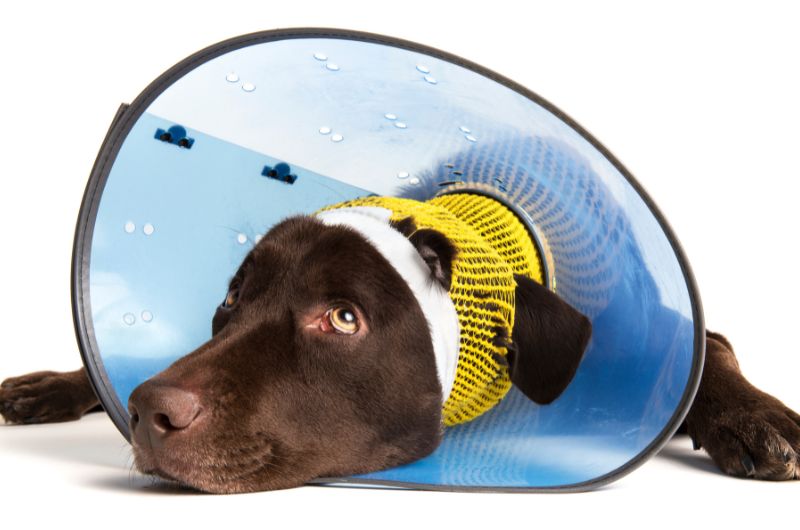
In 1962, F.L. Johnson patented the first post-surgical pet collar. Officially called the Elizabethan collar, or e-collar for short, the name was inspired by the fashion trend of the 16th century set by Queen Elizabeth I. The name mimics the shape of the classic ruff collar of lace worn around the neck.
Luckily, long gone are the days of only one option for your pet’s post-surgical attire! Nowadays, owners can choose from a multitude of different makes and models when it comes to postoperative care for your furry friend. In addition to the hard e-collars for dogs and cats, there is a wide range of soft cones and surgical body suits that may provide your recovering loved one with increased comfort.
Remember, although the fashionable patterns and colors may be enticing and adorable, the primary goal is to safeguard the healing process of the surgical site and prevent the incision from getting infected with bacteria. It’s very important that whatever you choose, be worn appropriately as instructed. Pets also need to be able to access their food and water, which may mean brief respites from the cone. There are several different aspects to consider when selecting what will be the best option for your dog or cat. Your pet’s veterinarian will also give advice and recommendations.

1. Location, location, location!
Above all, the location of the incision will greatly determine what options are available for your pet. If the surgical site you are trying to protect is on the chest, belly, or back, an e-collar, soft cone, or body suit should do the trick. However, incisions on the limbs, face, or tail, the e-collar is your best bet. In these cases, it limits not only the reach of the tongue, as well as the animal’s ability to scratch at its head.
2. Willpower
Owners know their pets best, including their temperaments when restrictions are involved. Pain management and learning a new routine can also intensify the situation. Some pets have an extreme desire to break the rules! They may be restless, try to get to the incision site, and potentially rip out sutures by any means necessary. For these kiddos, the recovery period may require even more of the owner’s time and attention. In some cases, pets may need to wear a combination of things. For example, an inflatable cone and an e-collar, a body suit and e-collar, and so forth.
3. Body Type
Since dogs come in all shapes and sizes, they may be able to wiggle their way to the exact area we are wanting to avoid. For our feline friends, flexibility is a major advantage in reaching the surgical site, as they can twist, turn, and bend with ease. For dogs like Dachshunds with long bodies and short legs, it’s a very different setup than a Great Dane with very long legs and big body.
4. Comfort
Ultimately during the recovery period, we want our pets to be comfortable while healing so they can get back to their happy normal selves. If closely monitored, sometimes a small break from the cone may be okay. However, depending on the pet, dogs and cats can be exceptionally sneaky when it comes to the postoperative care regiment. They may play calm, cool, and collected when their owners are watching them, but don’t be fooled. It can take less than 30 seconds for your little loved one to do some real damage to the surgical site.
*In the event your pet does get to the incision and removes sutures, call your veterinarian right away! Often, they will have you send a picture of the surgical site to start and then advise what to do for the next steps from there. In some cases, staples may be used, instead of restitching, and those will need to be removed 2 weeks later. Another round of antibiotics may be needed, as well. Always good practice to follow any postoperative instructions from the veterinarian!

